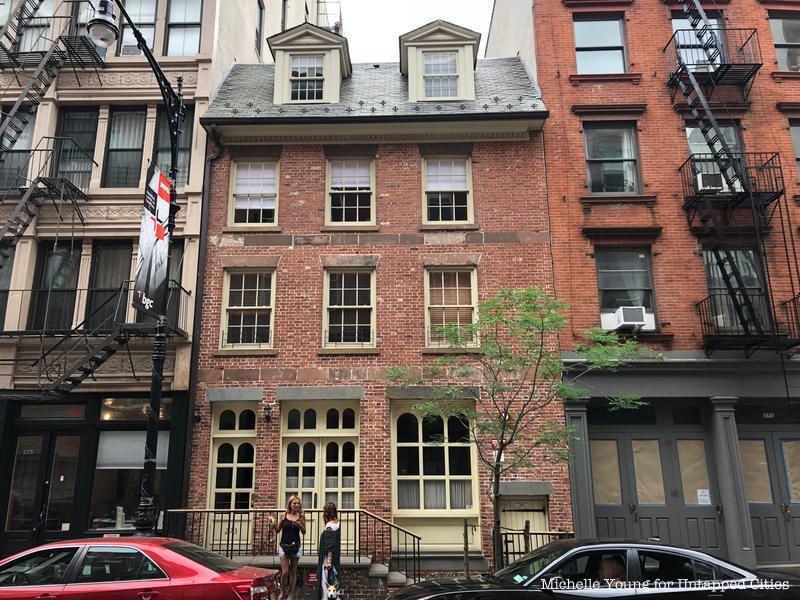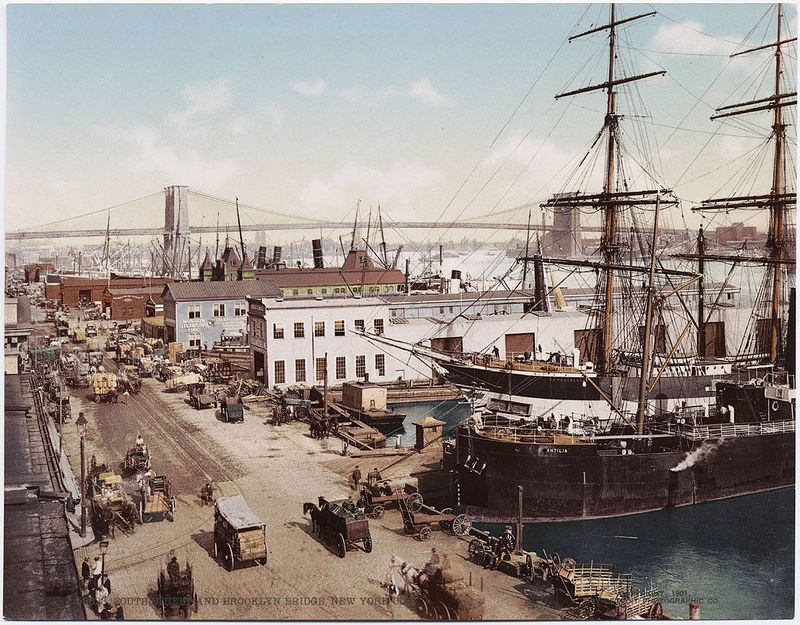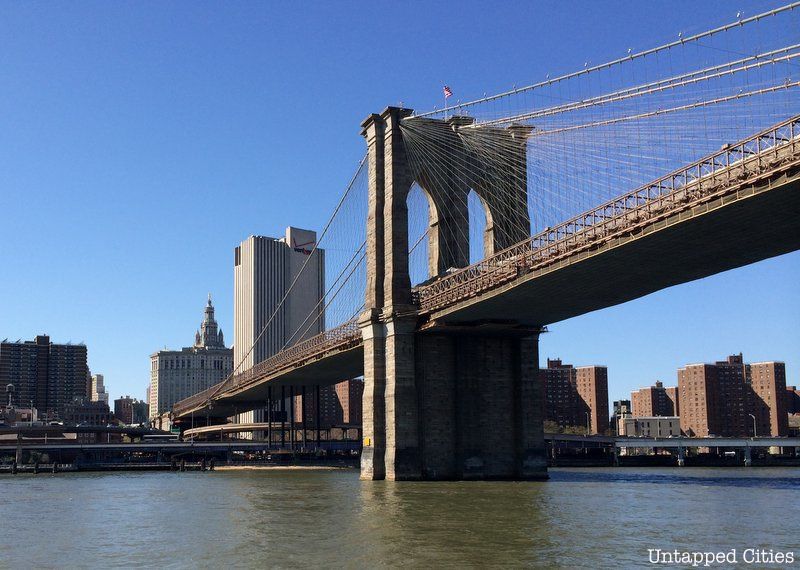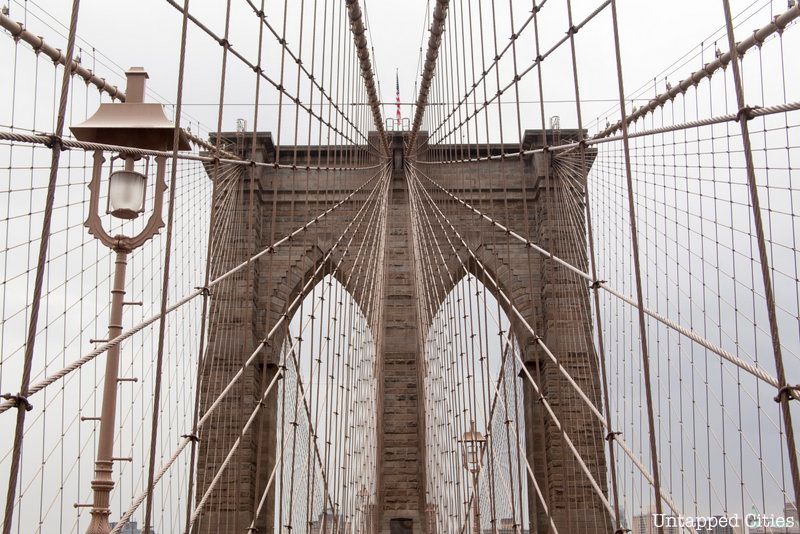Be Part of NYC’s Annual Architectural Pumpkin Carving Contest, Pumpkitecture!
On Halloween Eve, teams of New York City architects will go “gourd-to-gourd” to create the most impressive work of pumpkin


This article is written by William Roka, a historian with the South Street Seaport Museum.
As the recovery from Hurricane Sandy continues apace in the South Street Seaport district of New York City, the South Street Seaport Museum continues to teach the unique role that the district played in the development of New York as a great port city through the 19th
century. The Museum currently offers two walking tours of the area: the Hidden History of the Fourth Ward, and the Hidden History of the Brooklyn Bridge. Both tours focus on the critical years after the Civil War.
The Museum’s main buildings on Fulton and Water Streets, located in what was then the Second Ward, are fine examples of the irrepressible commercial spirit that defined the first half of the 19th century, when New York City rose to become America’s preeminent port and commercial city. As trade expanded and more sailors came through the area, the Fourth Ward, bordering the Second Ward, became home to New York’s vice district, a strange combination of commercial virtue and sin living side by side.
While in the first half of the century New York became America’s largest city, it boomed into a great global metropolis in the latter half. No other structure so clearly demonstrated this transition as the Brooklyn Bridge. Its construction would alter the very nature of the Seaport district. Completed in 1883, it was the longest suspension bridge in the world, a true symbol of American industrial might.
Here are 5 wicked secrets, ranging from colorful personalities and addresses from the Seaport’s seedy Fourth Ward, to the incredible odds that were overcome in order to build the Brooklyn Bridge.

Almost the entirety of this street is in the process of reconstruction after Hurricane Sandy.
This little wooden building was home to the former Bridge Café and before Sandy it was claimed to have been the longest operating tavern in the City, dating from 1794. In the 1850s it was thought to be the site of the Hole-in-the-Wall. Owned by One-Armed Charley Monell, his name really says it all, and his two ‘glamorous’ lady bouncers, Kate Flannery and Gallus Mag. Mag is the much better known of the two. She stood six-feet tall, filed her teeth to points, and kept a pistol at her waist. For those that displeased her, Mag had the interesting habit of biting off their ears, occasionally a finger, and pickling them in a large jar she kept behind the bar.

Originally built as a family home by the wealthy merchant and seafarer Captain Joseph Rose in 1773, when the area was considered a fashionable neighborhood. Ninety years later, it was to home to Kit Burns’s Sportsman’s Hall. Down a winding passage behind the main bar at the front of the building was a second room with an amphitheater that could accommodate up to 400 people. Inside it played host to illegal boxing matches where fighters wore no gloves.
Its most infamous events were the rat pit killings. Wharf rats packed 50 to cage were let loose into the area and then a weasel would be sent in. Howver it was only when the fighting dogs were let in that the crowds would really go wild! Some of Burns’s prize dogs could kill 100 rats within a few minutes. On special occasions Jack-the-Rat Jennings, Burns’s son-in-law, would bite the head off a rat for a quarter.
 Photo via Detroit Photographic Company in public domain from Wikimedia Commons
Photo via Detroit Photographic Company in public domain from Wikimedia Commons
The dance hall and saloon that once stood at 304 Water Street was owned by a man that the newspapers called ‘the wickedest man in New York,’ Mr. John Allen. Allen, a large muscled man, opened his first saloon in 1850 after leaving seminary where he had studied to be a pastor. What irony! His dance hall on Water Street was a three story brick building with green and yellow shutters. Musicians played jigs and reels, while male patrons danced with one of the 20 or so women dressed in provocative low cut bodices and skirts.
Most of Allen’s $100,000 fortune was made from the sale of liquor that the women would ‘suggest’ their dance partners buy for them. There were also rooms and cubicles available for more intimate activities. By the spring of 1869 the Fourth Ward would experience a radical change. The most infamous merchants of sin were either jailed, dead, or put out of business. However, it was the construction of one of the most important structures in the City, the Brooklyn Bridge, that would have the most profound effect. John Allen’s dance hall was one of the numerous buildings torn down to make way for the approaches and anchorages of the Bridge, cutting the Fourth Ward in half.


Each of the Brooklyn Bridge’s two massive granite towers weigh an incredible 90,000 tons each. In order to reach the bedrock below the river mud, massive caissons, basically giant diving-bells, were built to enable workers to excavate the tower foundation sites underwater. The top of these structures were made of 22 feet of pine fastened by bolts and pitch. The workers entered and exited the caisson via a primitive airlock.
As opposed to the Brooklyn side bedrock the New York side bedrock proved to be much deeper than originally estimated. As work approached nearly 80 feet down excavation had to stop, even though bedrock lay at least another 20 feet down. Far too many men were becoming ill with the feared caissons disease, better known today as the bends. Men suffered from joint pain, itchy skin, seizures, vision problems, and some suffered various levels of paralysis and eventual death.
The granite blocks making up the towers were laid right on top of the caissons. The 90,000 ton weight of each tower and the concrete poured inside each caisson squeezed the wood of the caisson roof making it waterproof and impervious to rot. Technically the Brooklyn tower rests on bedrock, while the Manhattan tower does not! The Chief Engineer and son of the Bridge’s architect, Washington Roebling, noted that the sand that the Manhattan tower’s foundation rests on had not shifted in millions of years and probably wouldn’t for millions more.

The laying of the cables would be the next most difficult and treacherous process in the Brooklyn Bridge’s construction. While the towers were being built, the approach ramps and anchorages were also being built. Each of the Bridge’s four cables is one long continuous length made up of 19 strands, which in turn each contain 278 separate wires. As each cable approaches the anchorage, the cables split back into 19 individual strands that are attached to the anchor chain that ends with a 46,000 pound star shaped anchor plate at the bottom of the anchorage.
Before being bundled together into a single cable, each strand had to be laid across the entire span of the Bridge individually. In June 1878 one of the strands broke loose, taking part of the anchor chain with it as it grazed surrounding buildings, killed two men, and finished with the whole strand between the two towers plunging into the river and nearly hitting a passing ferryboat.
The final Hidden History of the Fourth Ward tour of 2015 will be today, November 5th, and the final two Hidden History of the Brooklyn Bridge tours will be on November 12th and 19th. If you are interested in attending the tours please visit the South Street Seaport Museum’s website and get your tickets today.
Next, read about the Top 10 Secrets of the Brooklyn Bridge.
Subscribe to our newsletter